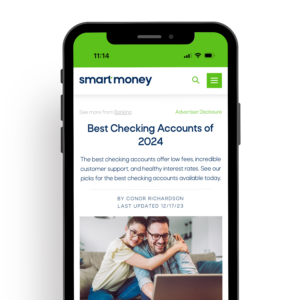Takeaways
- 401(k) retirement plans are tax-advantaged to help employees save for retirement.
- 401(k) matching funds are earned by employees who contribute to their 401(k) accounts.
- 401(k) matching contributions are either fully or partially matched by your employer.
- 401(k) matching contributions are additional funds to help grow your retirement savings.
- 401(k) plan vesting schedules are determined when your matching contributions are earned.
Many savers put off retirement planning until later in their financial journey. However, financial experts recommend that if you have access to employer-sponsored retirement plans like 401(k)s, you should at least take advantage of matching contributions. You can do this even as you tackle other areas in your finances, like saving for an emergency fund, investing in stocks, or buying your first home.
What is a 401(k)?
If you work for a private company, you may have access to an employer-sponsored 401(k) retirement plan. These plans are tax-advantaged investment vehicles that allow eligible members to save for retirement.
Named after a section of the U.S. Internal Revenue Code, 401(k) plans allow you to contribute a portion of your pre-tax income into individual investment accounts. You can invest your contributions in various asset classes, such as stocks, bonds, annuities, and real estate investments. Employers can work with 401(k) advisory firms that help create a curated list of investment options, such as target-date funds, exchange-traded funds, and mutual funds for you to invest.
Long-term savers have become 401(k) millionaires [1]. With consistent savings, appreciation in your investments, and matching contributions, finance professionals advocate that the path is well paved. At the end of the day, 401(k) plans can be a terrific way to create wealth and secure a consistent retirement income.
What are 401(k) Matching Contributions?
401(k) matching contributions can be a significant source of savings in many employer-sponsored retirement plans. This benefit underscores your company’s commitment to fostering employee financial well-being. In 401(k) matching contribution plans, an employer matches a portion of your contributions to your 401(k) plan, effectively augmenting your retirement savings with additional funds.
Employers offer 401(k) matching contributions to incentivize participation in the retirement savings program and bolster long-term financial security for their workforce. By matching a portion of the employee's contributions, companies provide a compelling incentive for employees to prioritize retirement savings, which can foster a culture of fiscal responsibility and planning.
Smart Money -> Should You Max Out Your 401(k) Contributions?
401(k) matching funds are essentially “free money" for employees, adding to their retirement nest egg without requiring additional contributions from their pockets. The matching contributions can be a valuable supplement to your retirement savings efforts, which lets you increase your retirement savings and net worth rapidly.
Not all companies offer 401(k) matching programs. However, it has become a competitive advantage for recruiting and retaining top talent.
Smart Tip:
About to accept a new job offer? Ask if the company offers 401(k) matching contributions. Approximately 85% of companies that offer a 401(k) retirement plan offer the matching feature [2].
Example of 401(k) Matching
Here's a quick example that can show how 401(k) matching actually works in real life:
Sarah works for a company that offers an employer-sponsored 401(k) retirement plan with a matching contribution benefit. Her company's matching policy states it will match 50% of employee contributions, up to 4% of an employee's salary. Sarah earns $50,000 annually and contributes 6% of her salary to her 401(k) plan.
During the first year of her employment, Sarah contributes $3,000 (6% of $50,000) to her 401(k) plan. According to her company's matching policy, it will match 50% of this contribution, up to 4% of her salary. Therefore, the company will contribute an additional $1,500 (50% of $3,000) to Sarah's 401(k) plan.
Smart Money -> What is a Traditional IRA?
At the end of the year, Sarah's total contribution to her 401(k) plan is $4,500 ($3,000 from her and $1,500 from her employer's matching contribution). Sarah’s matching contribution is not taxed and allows her to utilize an employee benefit that helps enhance her retirement savings.
Get Smart With Your Money
Fresh weekly articles delivered straight to your inbox.
Enter your name and email for free tips and tricks.

Types of 401(k) Matching
There are two main types of matching contribution structures that employers (who offer matching contributions) utilize. Here, we analyze both:
1. Full Matching
Complete matching occurs when the employer matches the employee's contributions dollar for dollar, up to a certain percentage of the employee's salary. For example, suppose an employee contributes 5% of their salary to their 401(k) plan, and the employer offers a full match of up to 5%. In that case, the employer will contribute 5% of the employee's salary to the plan but will not exceed this 5% ceiling.
Smart Money -> What is a 401(k) Loan?
2. Partial Matching
On the other hand, partial matching entails the employer matching only a portion of the employee's contributions, typically at a lower percentage or up to a specific limit. For instance, an employer might offer to match 50% of the employee's contributions, up to 3% of the employee's salary. In this scenario, if the employee contributes 6% of their salary, the employer will match 3% of the employee's salary.
Common Matching Formulas
| Matching Formula | Companies Using Approach |
|---|---|
| 50% up to 6% | 20% |
| 100% up to the first 3% 50% up to the next 2% |
19% |
| 100% up to 4% | 15% |
Source: T. Rowe Price [3]
401(k) Vesting Schedules
If you are contributing your hard-earned income into a 401(k) account for retirement savings, you should understand all the moving pieces of your 401(k) plan. One of the critical features of your plan is how the vesting schedule works.
A 401(k) vesting schedule determines when you get full ownership rights of your employer-matched funds allocated to your retirement accounts. Vesting determines the degree of ownership you have in the employer-contributed funds and can vary from company to company. Vesting schedules can significantly affect employee retention and morale.
Smart Money -> What is a Roth IRA?
There are two primary types of vesting schedules, each with distinct nuances and implications:
1. Cliff Vesting
This vesting structure entails a definitive threshold that employees must surpass to achieve complete ownership of employer-matched funds. Under a cliff vesting arrangement, employees typically attain full vesting after a specified period, such as three years of service. Until you reach this milestone, you do not have ownership rights over the matched 401(k) contributions. A cliff vesting can incentivize long-term commitment to the company.
2. Gradual Vesting
In contrast to cliff vesting, gradual vesting allows employees to accumulate ownership rights over employer-matched funds over a staggered period. Companies can adopt various vesting schedules, including percentage-based approaches, where employees gain vested ownership of a portion of the matched contributions annually.
For example, your company might have a 401(k) vesting schedule where you become 20% vested each year, culminating in full vesting after five years of employment. Gradual vesting strategies promote employee retention by rewarding loyalty and tenure, aligning with the long-term interests of both employees and employers.
Smart Money -> 401(k) Contribution Limits
The selection between the cliff and gradual vesting schedules hinges on your company’s goals, employee retention strategies, and industry benchmarks. Cliff vesting is used by employers aspiring to incentivize prolonged tenure and mitigate turnover, particularly in sectors characterized by high employee mobility. Conversely, gradual vesting offers companies a sense of progression and achievement over time, potentially enhancing morale and fostering sustained engagement. Either approach puts capital into your 401(k) account to increase your 401(k) savings.
What if You Don’t Have a 401(k)?
Depending on where you work, you might not have access to a 401(k) plan. Because these plans are for private and public companies, you might have access to different types of retirement plans that also offer contributions. If you have access to contribute to one of the below retirement plans, you could be eligible for matching contributions:
- 403(b) Plan
- Thrift Savings Plan
- 457(b) Plan
Consult with your human resources department to see what your employer offers because you can start saving for retirement anytime. However, most finance professionals advocate for saving earlier in your career.
Smart Summary
Saving for retirement is an essential part of financial planning. Employer-sponsored 401(k) plans can be tremendously productive for accumulating funds for retirement and 401(k) matching contributions can be a vital part of your savings strategy. Understanding the nuances of 401(k) matching contributions, vesting schedules, and contribution limits can help you maximize your retirement benefits and long-term financial goals.
References:
(1) Fidelity. Q4 2023 Retirement Analysis. Last Accessed March 22, 2024
(2) Fidelity. Fidelity Q1 2023 Retirement Analysis: Despite Economic Challenges, Retirement Account Balances Continue to Rise. Last Accessed March 22, 2024
(3) T Rowe Price. Reference Point. Last Accessed March 22, 2024










